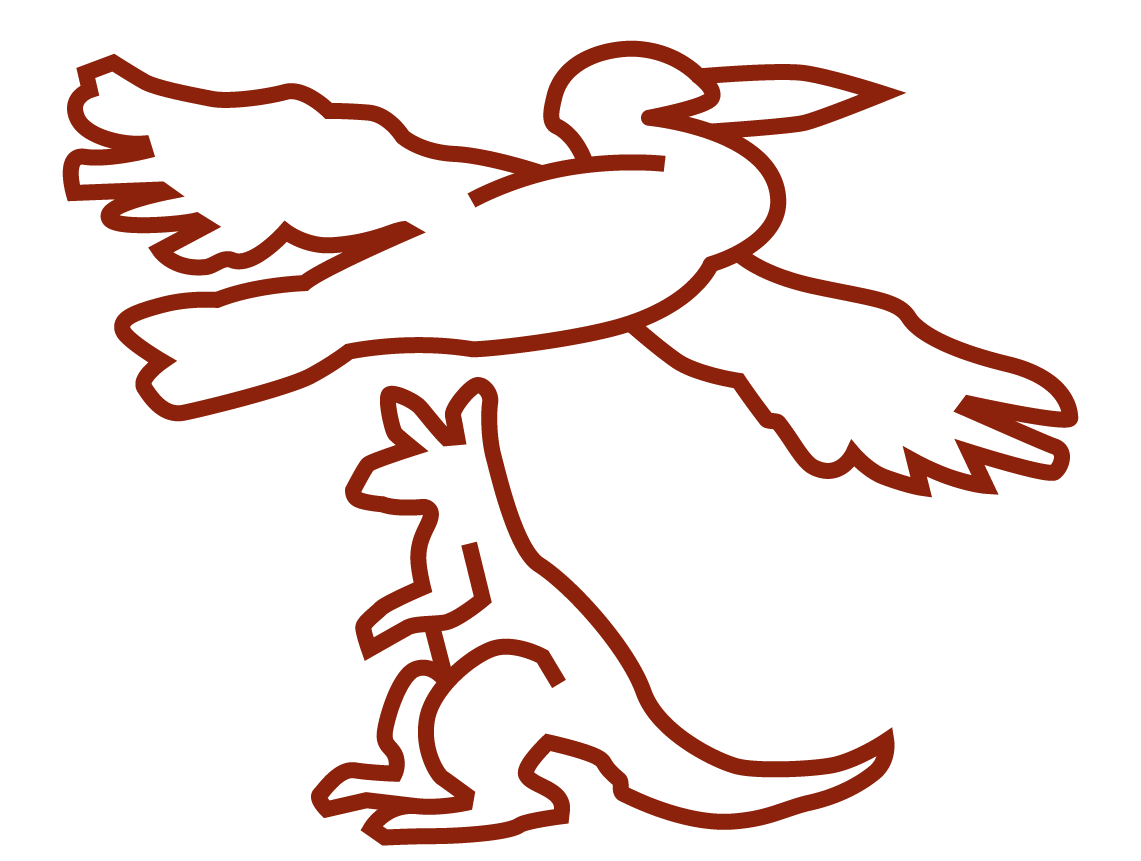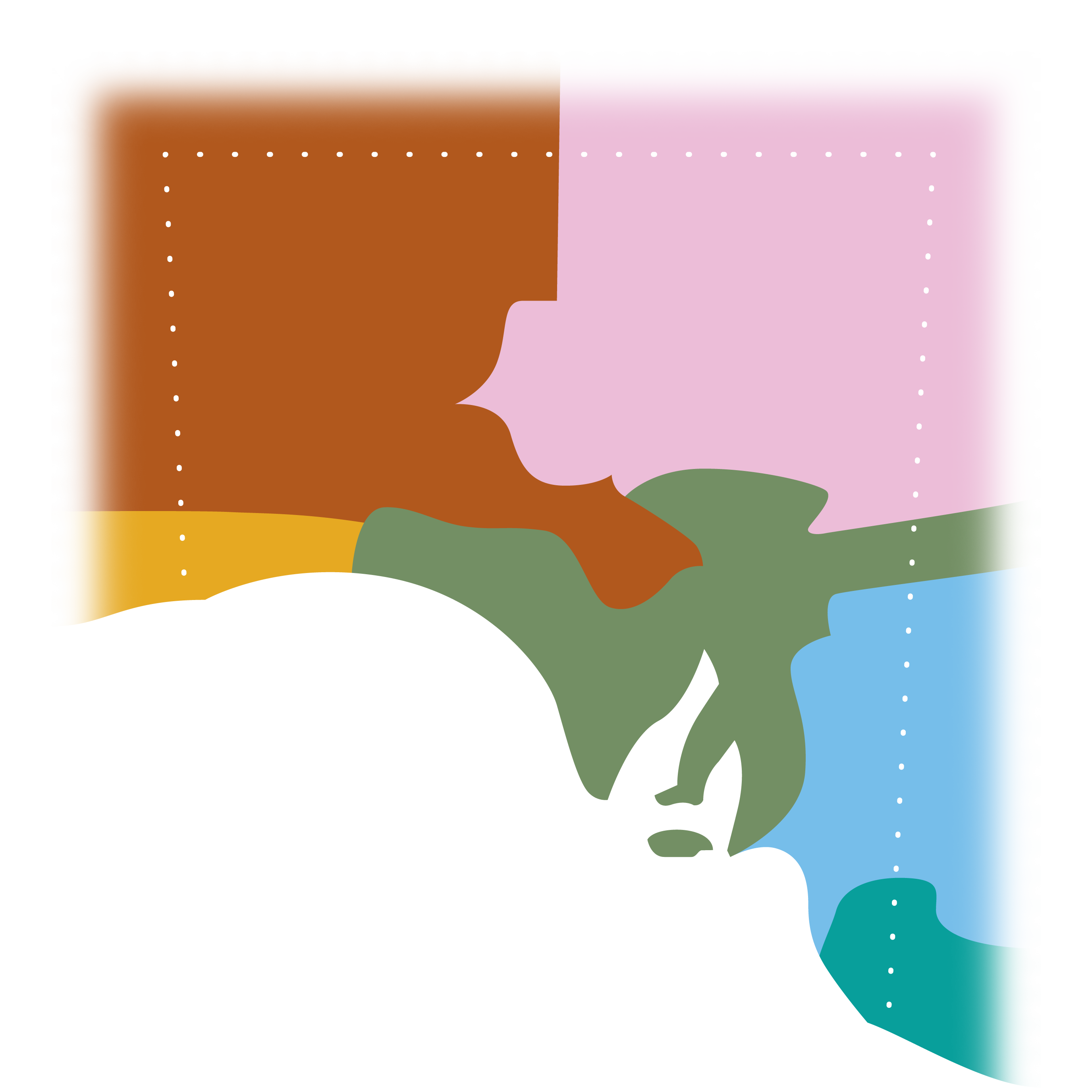
In this lesson we will be looking at the animals of the Coorong. Animals are an important food source for Tanganekald people. Animals also feature strongly in other aspects of everyday life, as ngaitji or ‘totem’ creatures, as well as in song lines of the region. First up, let’s learn some words for animals and hunting.
Hunting
Traditionally Tanganekald country was divided into many small hunting and fishing territories called karawi. These were marked by well-defined boundaries called kinara which was marked by various geological features or sometimes these took the shape of sticks carved with the ngaityi 'totem' of the owner. These karawi 'hunting territories' were controlled by families who had the sole right to hunt over the area. The head of the family territory was called the kalyanan karawi. Traditionally Tanganekald country was divided into many small hunting and fishing territories called karawi. These were marked by well-defined boundaries called kinara which was marked by various geological features or sometimes these took the shape of sticks carved with the ngaityi 'totem' of the owner. These karawi 'hunting territories' were controlled by families who had the sole right to hunt over the area. The head of the family territory was called the kalyanan karawi. These hunting rights associated with the karawi were passed down from father to son, and if this succession failed the area would pass to the owners of an adjoining territory who were of the same moiety. A man's brother had equal right to share such an area subject to a certain deference of a younger brother towards an elder. A younger brother might be given a karawi 'hunting territory' by someone of the same moiety who had too large of an area. Here are some words related to hunting.
| djuring | animal taken by hunting | |
| karak | tracks; marks | |
| karawi | hunting territories | |
| kalyanan karawi | head of the family hunting territoy | |
| kinara | boundary of a hunting territory | |
| kumpukalala | emu caller | |
| paring | dog for catching kangaroos | |
| talayarrinyi | fire | |
| tunduwanganal | game; animals used as food |
A kumpukalala 'emu caller' is a hollow log with a mouthpiece made of resin. It is used to attract emus to ambush during the male display season. Hunting land animals was more common in the cooler months, as people would move inland to avoid harsh sea winds. Wainggami 'kangaroos' and peindjali 'emus' were hunted by organised parties. The hunting parties would ambush animals and use fire to drive animals to the many narrow-necked peninsulas jutting out onto the Coorong. Here, the animals were easily cut off and trapped. Here are some land animals which were commonly hunted by the Tanganekald people.
| peindjali | emu | |
| tulatji | wallaby which lives on the salt flats or in the swampy areas | |
| wainggami | kangaroo |
Duck Hunting
A significant aspect of Tanganekald hunting practices is duck hunting. Hunting ducks could involve nets, nooses or returning boomerangs. One method is that the men would wade out to place a loop of string around the head of an unsuspecting duck and drag it under. The duck would flutter its wings and call out, attracting other ducks. Three or four men could catch 20-30 ducks in one go using this method.
| kalpuri | Australasian shoveler duck | |
| ngarankura | nets for catching ducks | |
| pangkeitji | returning boomerang | |
| teinta | Pacific black duck |
Ngaitji
Tanganekald ruwi 'country' is home to a number of different clans, which composed the Tanganekald group. Each of these clans has their own ngaitji or 'totem'. A ngaitji is described as a natural object, plant or animal that is inherited by members of a group or family as their spiritual emblem and protector. These ngaitji were passed down throughout generations. Tanganekald people have a responsibility to look after their ngaitji. The following clans make up the Tanganekald nation; Kangeilindjeri, Yerangulindjeri, Kanmere, Karagarindjeri, Keinarindjeri, Kongolindjeri, Lindinjeri, Lunggundjeri, Martandi, Meintangki, Milmendjeri, Momakeindjeri, Nenkandoli, Ngaindjeri, Ngeiwatjeri, Peregelindjeri, Darpundjeri, Tempurumindjeri, Tumbalindjeri, Tuuri, and Wurultindjeri.
| torokori | seagull |
The torokori 'seagull' is a ngaitji of the Kangeilindjeri people.
| kereidjeri | a large type of mullet |
The kereidjeri 'large mullet' is the secondary ngaitji of the Kangeilindjeri people. The kereidjeri bones were used as sharp points in making meralaipuri 'spears for combat'.
| turi | Australian coot | |
| tumpali | march fly |
A turi 'Australian coot' is a dark-grey water bird. The turi was the original ngaitji of the Yerangulindjeri people before they changed to the tumpali 'march fly'.
| kuraki | rose coloured cockle |
The kuraki 'rose coloured cockle' is the secondary ngaitji for the Kanmere people. They would use jagged pieces of the cockle as sharp spines for their meralaipuri 'spears'.
| ragaralti | white egret |
The ragaralti 'white egret' is a large, long-necked white bird. The ragaralti was a secondary ngaitji for the Kanmere people.
| ngamurnyi | a water weed |
The ngamurnyi 'waterweed' grows in the Coorong. It is a waterweed from which blankets are made. It is the ngaitji of Milerum, and the Temprumindjeri people.
| ngolakamaldi | bull ant |
The ngolakamaldi 'bull ant' is the ngaitji of the Karagarindjeri people and the Yerangulindjeri people.
| ngulgarinyeri | a type of bull ant |
The ngulgarinyeri type of 'bull ant' is a ngaitji of the Yerangulindjeri of Dodd's Landing in the Coorong.
Songline animals
Urti! 'Deadly!' Now we're going to move on and learn about some animals which feature in the songlines of the Coorong region. Songlines are the history of the land and people, and tell how places, people and animals came to be.
| duta | scarlet robin |
The duta 'scarlet robin' is a large robin with a red coloured breast. In songline, the duta was burnt and has a red chest today as a result.
| yamakawi | a type of shark |
In songline, the ancestral shark man was chased away with some spears made from kinyerra 'grass tree'. He ran into the sea and became the yamakawi 'shark'.
| karumapuli | boobook owl |
The karumapuli ‘boobook owl’ is one of two owls in the Crow songline.
For more information on the crow songline please click here.
| kelindi | grey currawong |
The kelindi 'grey currawong' is a large crow-sized bird with a large black bill and yellow eyes. According to a songline, this bird was a man and a great messenger. It is said that the kelindi also warns people of strangers approaching.
| kondoli | whale | |
| tanitjari | Caspian tern |
The tanitjari 'Caspian tern' is a bird with a thick, bright-red bill and has a black cap in summer months. The tanitjari appears in songline along with tarawari 'Australian salmon', as tanitjari was chasing him.
| tarawari | Australian salmon |
The tarawari ‘Australian salmon’ being was stalked by tanitjari ‘Caspian tern’ man at Salt Creek. Tarawari escaped to the sea at Kukaring, Flax Point.

